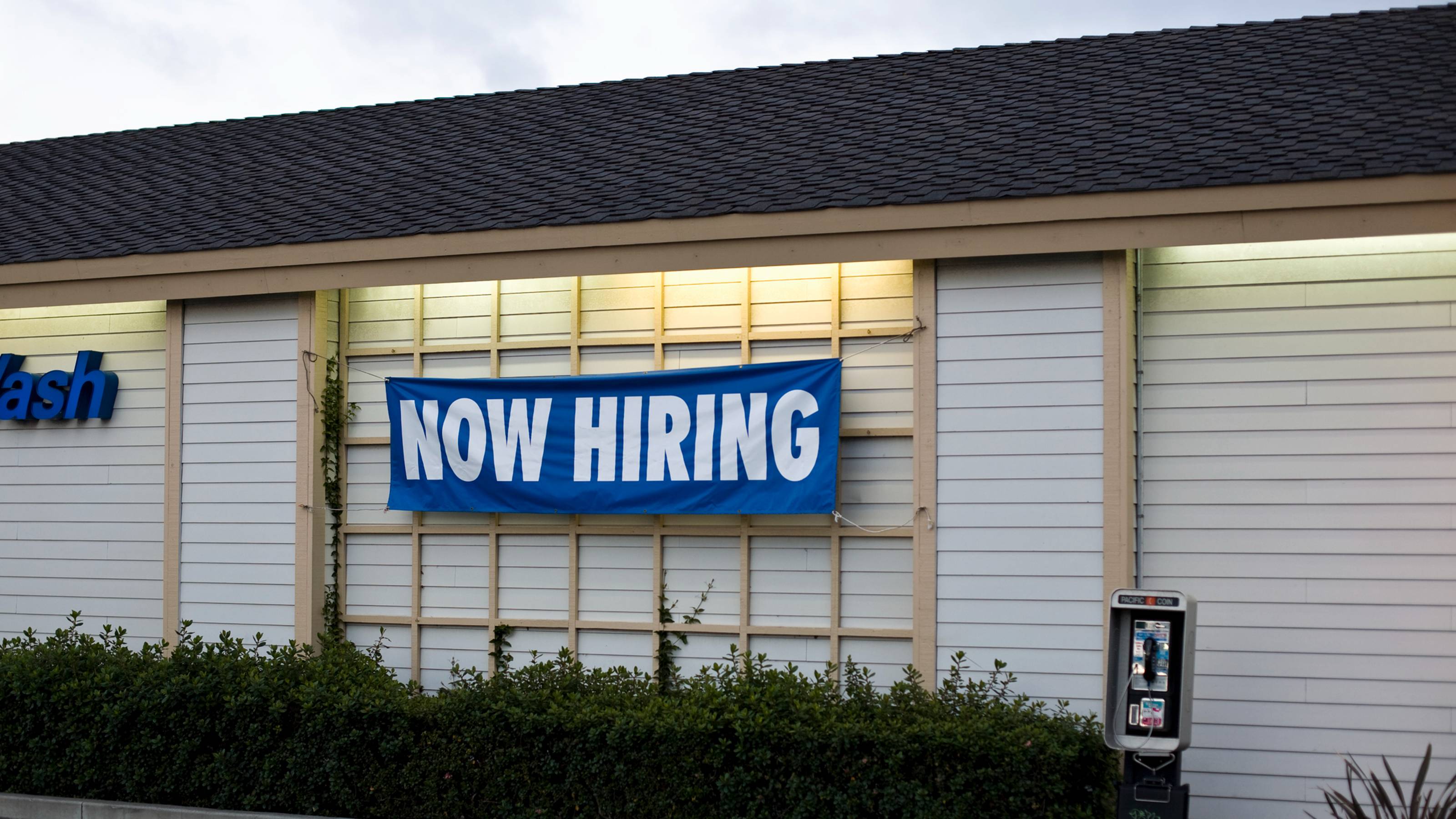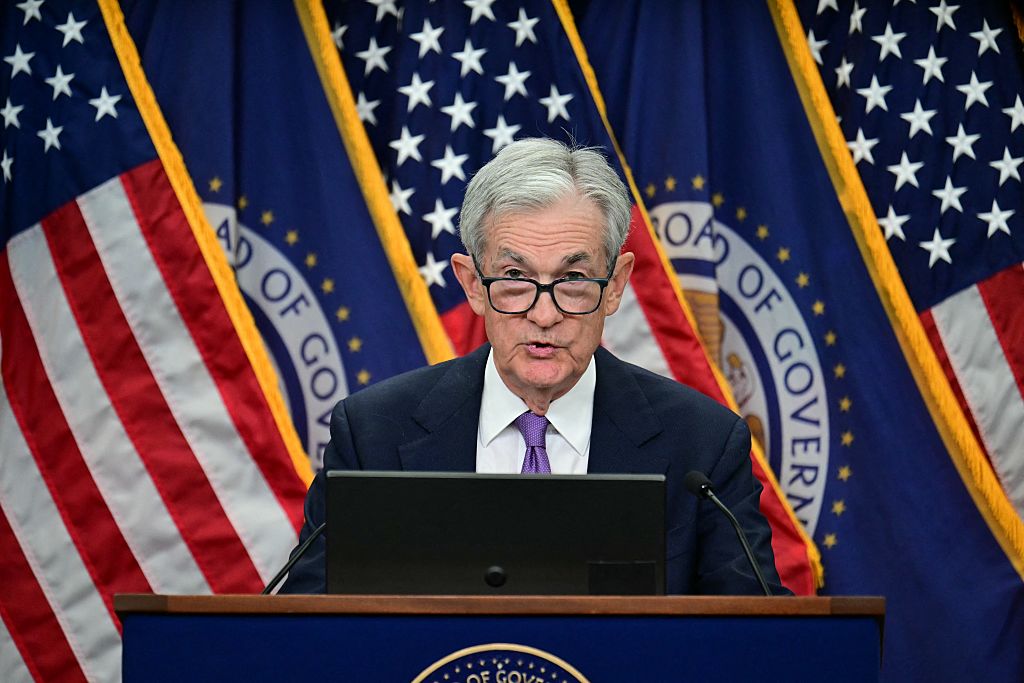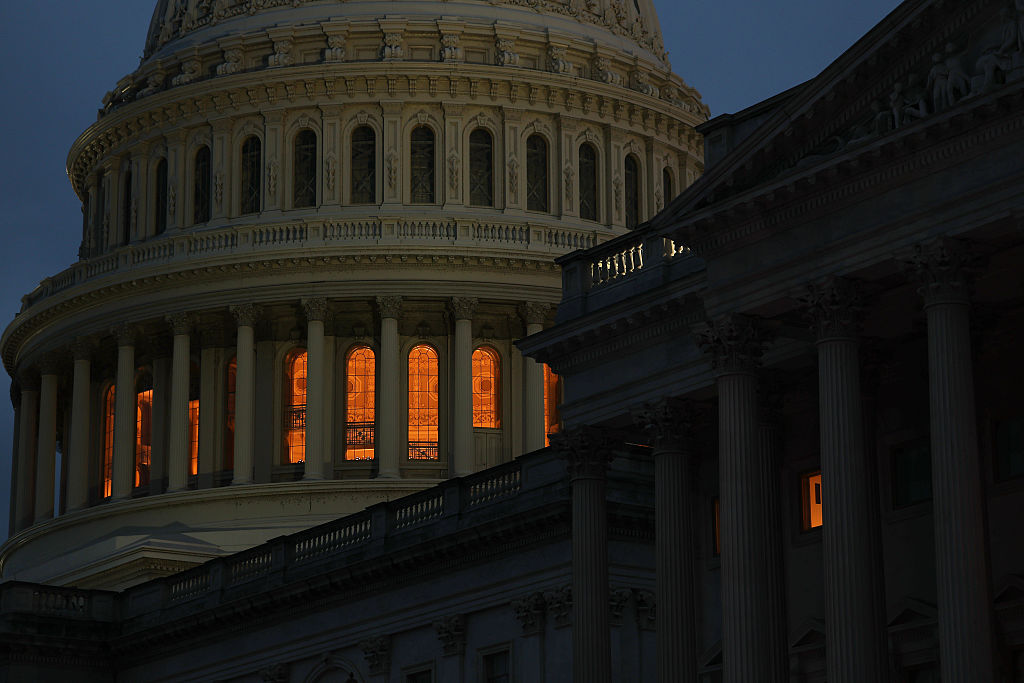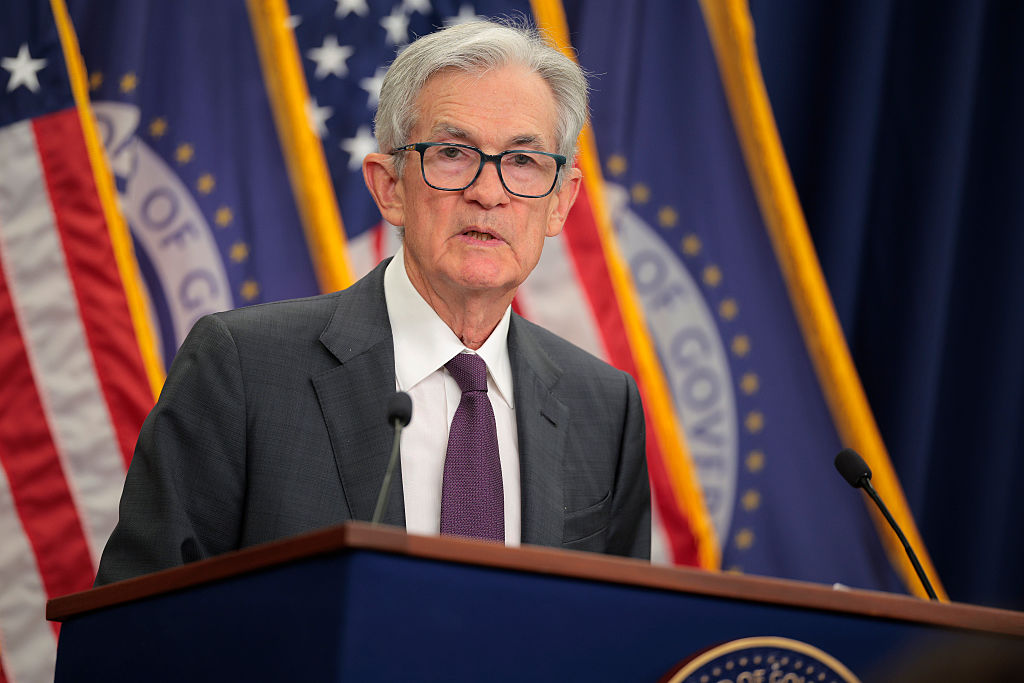February Jobs Report Beats Expectations: What the Experts Are Saying
Underlying data in the stronger-than-expected jobs report relieves some pressure on the Fed when it comes to raising interest rates.


The latest jobs report once again beat expectations by a wide margin, but experts say that doesn't automatically mean the Federal Reserve will revert to a more aggressive stance on interest rates.
The U.S. economy added 311,000 new jobs in February, the Bureau of Labor Statistics said Friday, well ahead of economists' forecast for the creation of 225,000 nonfarm payrolls. That marked the second consecutive month of surprisingly strong growth in the labor market, although January's jobs number was revised down slightly, to a gain of 504,000 new jobs from an initial reading of 517,000.
A spate of stronger-than-expected GDP and other economic data following last month's payrolls report – as well as stubbornly high readings on inflation – has put pressure on the Fed to increase its pace of interest rate hikes.
From just $107.88 $24.99 for Kiplinger Personal Finance
Become a smarter, better informed investor. Subscribe from just $107.88 $24.99, plus get up to 4 Special Issues

Sign up for Kiplinger’s Free Newsletters
Profit and prosper with the best of expert advice on investing, taxes, retirement, personal finance and more - straight to your e-mail.
Profit and prosper with the best of expert advice - straight to your e-mail.
But the February jobs report relieves some of that pressure, experts say.
The central bank's rate-setting group, known as the Federal Open Market Committee (FOMC), had been easing – to a 25 basis point (0.25%) increase in the fed funds rate from 50 basis points, which itself was down from four straight 75 basis point hikes. Market participants feared that a hot February jobs report could force the FOMC to return to a 50 basis point increase at the next Fed meeting.
Happily for equity investors, some components of the nonfarm payrolls report give the Fed room to stay the course with a 25 basis point increase when it next convenes on March 21 and 22.
The unemployment rate, for example, ticked up to 3.6% in February from 3.4% in January, as firms increased layoffs and more workers re-entered the workforce. (Note well, however, that the unemployment rate remains near its lowest level in more than 50 years.)
More importantly for the Fed, experts say, is that wage growth continues to cool. Although a 50 basis point hike remains a possibility, the Fed is unlikely to reverse course in absence of evidence of a wage-price spiral, our experts note.
With the February jobs report now a matter of record, we turned to economists, investment officers, portfolio managers and other pros for their thoughts on what the data means for markets, macroeconomics and monetary policy going forward. Please see a selection of their commentary, sometimes edited for brevity or clarity, below.
What the experts are saying

"The jobs report is a mixed bag; something for both hawks and doves. But the bottom line is that with wage growth apparently headed down towards a pace consistent with the inflation target, switching back to a 50 basis point [0.50%] hike looks like overkill." – Ian Shepherdson, chief economist at Pantheon Macroeconomics
"There has been much talk in advance of today's jobs report, as many feared that a higher-than-expected jobs number would force the Fed to revert to 50 basis point hikes, from their current 25 basis point pace. Although the numbers did come in higher than expected, the unemployment rate also jumped up, and we believe a rising unemployment rate can give the Fed cover to continue raising at 25 basis points per meeting." – Chris Zaccarelli, chief investment officer at Independent Advisor Alliance
"The February employment report was a positive one overall. Although the unemployment rate rose, job gains were strong and labor force participation grew, signaling Main Street's optimism in hiring. The bigger news was the lowest month-over-month gain in average hourly wages in a year. That result, paired with a downtick in average hours worked, throws some doubt into the FOMC's March decision. Although a 50-basis point hike is still on the table, this report is more supportive of a quarter-point increase." – Curt Long, chief economist and vice president of research at the National Association of Federally-Insured Credit Unions
"We got another strong number from a headcount perspective, but a continuation of easing in wage growth. This report really showed something for everyone. There's been a clear downtrend in wage growth, now annualizing at 3.6% over the last 3 months from about 4.9% at the end of last year, which continues to show little evidence of a wage-price-spiral. This won't be a clear push for the Fed to jump back up to 50 basis points (hike wise) at their next meeting, although there are a few more data points that could change things next week." – John Luke Tyner, portfolio manager and fixed-income analyst at Aptus Capital Advisors
"The uptick in the unemployment rate to 3.6%, coupled with slowing wage growth, helped underpin the Treasury market with yields edging lower upon the release of the payroll report. The futures market has quickly recalibrated its expectation for a 50 basis point hike on March 22, and a 25 basis point move is now receiving the highest probability. To be sure, next week's CPI and PPI reports, should they come in hotter than expected, could push the 50 basis point bet higher, but this morning's print gives the Fed breathing room as it also needs to focus on the extent of damage spilling over from the Silicon Valley Bank shocking headlines." – Quincy Krosby, chief global strategist at LPL Financial
"The February Jobs Report came in stronger than expected. Market interest rates dropped and stock futures stabilized upon release. Perhaps the best news from this report was the easing of wage pressures to +4.6% year-over-year. Since the Fed has been most focused on terms like 'super core' and 'sticky' price pressures, a drop in the largest costs for businesses is a welcome development. Nonetheless, 50-basis points is still on the table for the March policy meeting, given recent economic strength and dependent on next week's CPI report." – John Lynch, chief investment officer for Comerica Wealth Management
"The February payroll employment number confirmed that the U.S. labor sector, and overall economy, continues to defy the Federal Reserve's (Fed) attempts to weaken economic activity through higher interest rates. However, there are some cracks in the employment market that could be pointing to some weakening occurring in a few sectors of the economy. Furthermore, the increases in the unemployment rate as well as in the labor force participation rate are welcome news for the Fed but probably not enough for them to not move forward with more interest rate increases." – Eugenio Alemán, chief economist at Raymond James
"The U.S. economy cranked out another large number of jobs in February, but there were enough soft patches in the overall report to possibly keep the status quo (another 25 basis point rate hike instead of 50) at the Fed's next meeting. To say that markets were on tenterhooks prior to today's jobs report would be an understatement, given Powell's hawkish testimony that put speeding up the pace of rate hikes on the table. Yet, markets were able to breathe a sigh of relief, with Treasury yields pulling back, despite a stronger than expected headline print. Given the other weaker offsets in the overall report, notably the upturn in the unemployment rate, the decision to hike rates by 50 basis points instead of 25 basis points on March 22 will likely come down to next week's CPI release. Hopefully, that won't be the day 'the music died.'" – Sal Guatieri, senior economist at BMO Capital Markets
"We maintain our view that the Fed will raise its policy rate by 25 basis points in March to 4.75% to 5.0%, though it remains a close call. We maintain our outlook for 25 basis point rate hikes at the May and June meetings for a terminal target range forecast of 5.25% to 5.50%. That being said, a reversion to 50 basis point hikes in March remains a possibility, depending on incoming data." – Michael Gapen, U.S. economist at Bank of America Securities
"Despite a stronger-than-expected headline number of 311,000 payrolls added in February, the read between the lines offered a faint signal that a loosening labor market may be underway. Most of the payrolls added remain in the service sector and in particularly the leisure and hospitality space. As the Fed examines the data, they will be encouraged with wages rising at a slower pace and the participation rate ticking higher. On balance, the employment report wasn't strong enough to put a 50 basis point hike back on the table, but the next data hurdle will be the CPI print in the coming days." – Charlie Ripley, senior investment strategist at Allianz Investment Management
Profit and prosper with the best of Kiplinger's advice on investing, taxes, retirement, personal finance and much more. Delivered daily. Enter your email in the box and click Sign Me Up.

Dan Burrows is Kiplinger's senior investing writer, having joined the publication full time in 2016.
A long-time financial journalist, Dan is a veteran of MarketWatch, CBS MoneyWatch, SmartMoney, InvestorPlace, DailyFinance and other tier 1 national publications. He has written for The Wall Street Journal, Bloomberg and Consumer Reports and his stories have appeared in the New York Daily News, the San Jose Mercury News and Investor's Business Daily, among many other outlets. As a senior writer at AOL's DailyFinance, Dan reported market news from the floor of the New York Stock Exchange.
Once upon a time – before his days as a financial reporter and assistant financial editor at legendary fashion trade paper Women's Wear Daily – Dan worked for Spy magazine, scribbled away at Time Inc. and contributed to Maxim magazine back when lad mags were a thing. He's also written for Esquire magazine's Dubious Achievements Awards.
In his current role at Kiplinger, Dan writes about markets and macroeconomics.
Dan holds a bachelor's degree from Oberlin College and a master's degree from Columbia University.
Disclosure: Dan does not trade individual stocks or securities. He is eternally long the U.S equity market, primarily through tax-advantaged accounts.
-
 Question: Are You Planning for a 20- or 30-Year Retirement?
Question: Are You Planning for a 20- or 30-Year Retirement?You probably should be planning for a much longer retirement than you are. To avoid running out of retirement savings, you really need to make a plan.
-
 How to Steer Clear of the Medicare Tax Torpedo
How to Steer Clear of the Medicare Tax TorpedoBetter beware, because if you go even $1 over an important income threshold, your Medicare premiums could rise exponentially due to IRMAA surcharges.
-
 Having No Life Insurance Is Like Driving Without a Seat Belt
Having No Life Insurance Is Like Driving Without a Seat BeltLife insurance is that boring-but-crucial thing you really need to get now so that your family doesn't have to launch a GoFundMe when you're gone.
-
 December Fed Meeting: Updates and Commentary
December Fed Meeting: Updates and CommentaryThe December Fed meeting is one of the last key economic events of 2025, with Wall Street closely watching what Chair Powell & Co. will do about interest rates.
-
 The Delayed September Jobs Report Is Out. Here's What It Means for the Fed
The Delayed September Jobs Report Is Out. Here's What It Means for the FedThe September jobs report came in much higher than expected, lowering expectations for a December rate cut.
-
 October Fed Meeting: Updates and Commentary
October Fed Meeting: Updates and CommentaryThe October Fed meeting is a key economic event, with Wall Street turned into what Fed Chair Powell & Co. did about interest rates.
-
 The Delayed September CPI Report is Out. Here's What it Signals for the Fed.
The Delayed September CPI Report is Out. Here's What it Signals for the Fed.The September CPI report showed that inflation remains tame – and all but confirms another rate cut from the Fed.
-
 Banks Are Sounding the Alarm About Stablecoins
Banks Are Sounding the Alarm About StablecoinsThe Kiplinger Letter The banking industry says stablecoins could have a negative impact on lending.
-
 Government Shutdown to Delay Data, Including Key Jobs Report
Government Shutdown to Delay Data, Including Key Jobs ReportWhile government shutdowns typically don't impact stock returns, they can delay the release of key economic data – including the monthly jobs report.
-
 September Fed Meeting: Updates and Commentary
September Fed Meeting: Updates and CommentaryThe September Fed meeting is a key economic event, with Wall Street keyed into what Fed Chair Powell & Co. will do about interest rates.
-
 Hot August CPI Report Doesn't Shift the Rate-Cut Needle: What the Experts Say
Hot August CPI Report Doesn't Shift the Rate-Cut Needle: What the Experts SayThe August CPI came in higher than forecast on a monthly basis, but Wall Street still expects a rate cut at next week's Fed meeting.